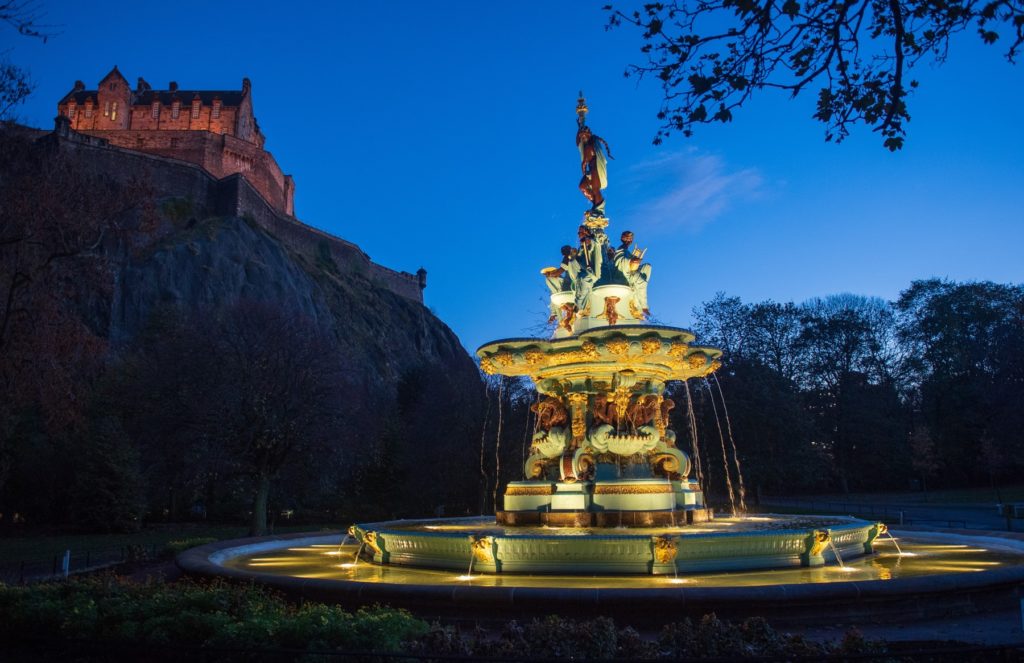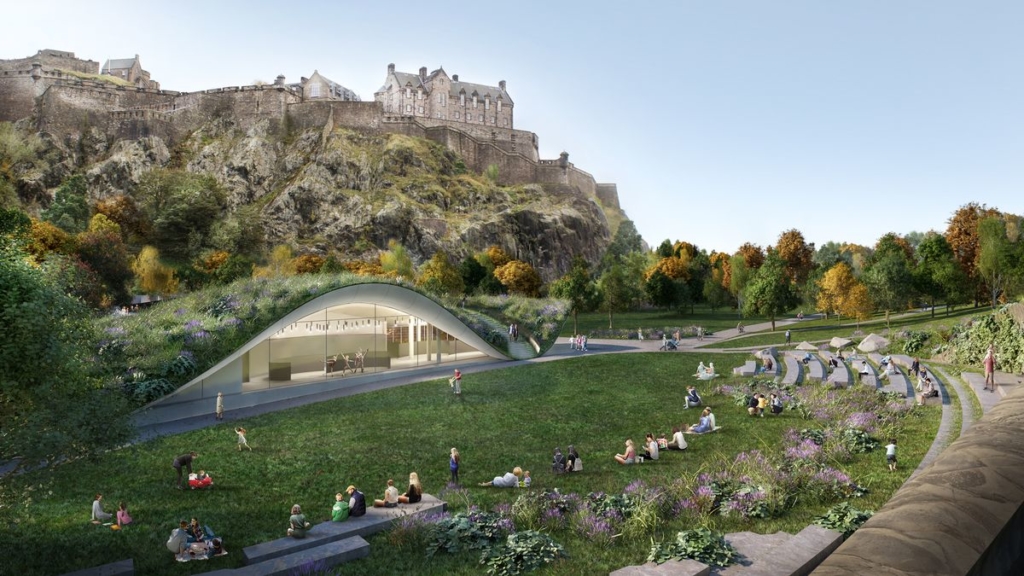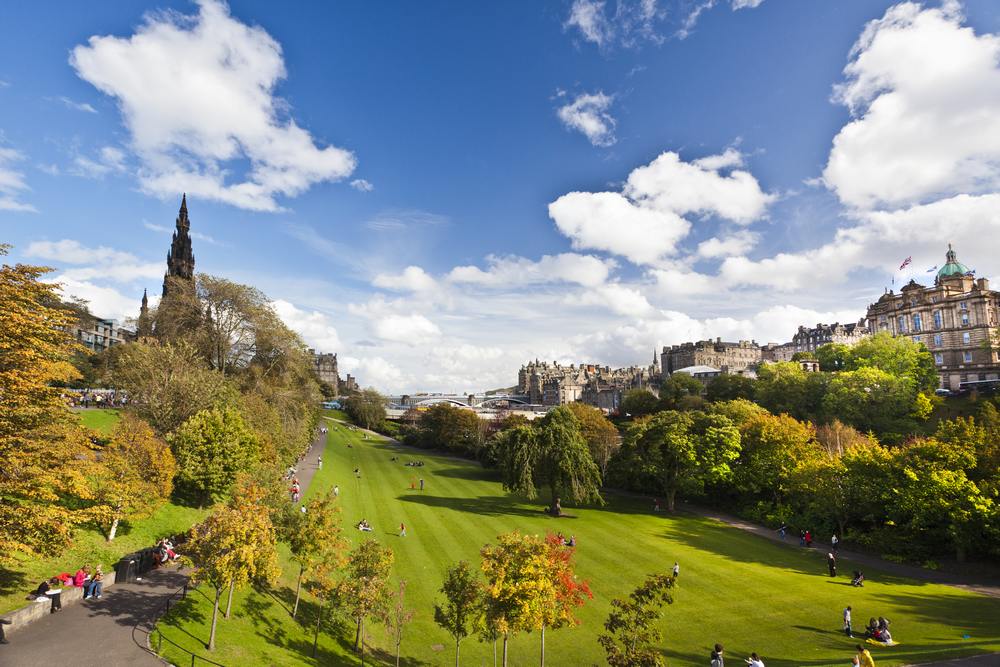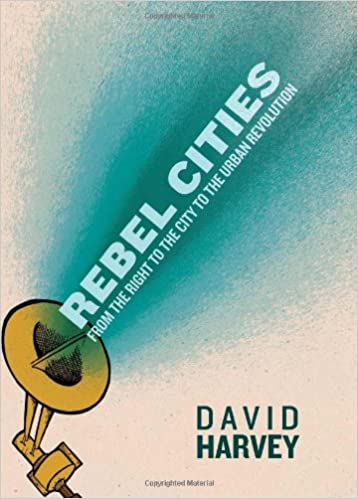Princes Street Gardens: a Home Grown Public Realm Disaster


Part 1; The stab in the heart. Edinburgh council and the curse of commodification
Perhaps it’s just as well that, where a concern for public open space is concerned, Scotland is not Turkey. In May 2013 a mass protest movement greeted the proposals of an Erdogan government-backed developer to build a shopping mall on one of the most precious green spaces in central Istanbul, the Taksim-Gezi Park, originally laid out by the French architect and urban designer, Henri Prost, at the behest of father of the nation, Kemal Ataturk.
Those who felt strongly enough to stage a sit-in were violently evicted by police, but far from suppressing the protests the authorities provoked a backlash which came close to destabilising the government. The regime’s iron grip on the media failed to quell the anger. An outside broadcast van was attacked and destroyed during one demonstration, such was the level of public distrust for ‘official’ television in a state which regularly imprisons its independent journalists.
Within weeks, the entire country was in uproar, with an estimated three and a half million Turks taking to the streets in as many as 5000 demonstrations. This was no longer simply a campaign to save a park, of course. It had become an expression of widespread discontent with the oppressive Erdogan regime. Even so, at this point the words which opened this essay bear repeating. Perhaps it’s just as well that Scotland isn’t Turkey.
In early June the police withdrew from the park, and the deputy prime minister apologised to protesters. They were joined by sympathisers, and the atmosphere became easy-going and relaxed, with street food, discussion groups, impromptu musical performances, family picnics, poetry, yoga classes, and general bonhomie. Two weeks later the police were back, this time with tear gas, rubber bullets, batons, and water cannon. It is estimated that by the end of the summer of protest there were 22 dead, from a 14 year old schoolboy to an 88 year old musician, and as many as 8000 injured.
Police Scotland, it goes without saying, would never do this. Citizens are free to assemble peaceably, and the police, who we all appreciate have a duty to uphold public order, would be a reassuring presence rather than a tooled-up hit squad out to break heads, though some ‘kettling’ practices might be open to question from time to time.
Yet when Edinburgh’s primary public garden is commandeered by commercial interests, trees felled to make way for a tacky ‘Winter Wonderland’ market, memorial benches piled high and burnt, soil compacted, churned up, and ecologically abused by a London company operating without planning consent, and turf brought in from as far away as Yorkshire containing who knows what pathogens or fungal spores which might very well contain such diseases as ash die back, remarkably few of us seem to care. In Istanbul, by contrast, people put their lives on the line to save their park.


True, there might be some grumbling in the Edinburgh bus queue, condemnation from the Cockburn Association, and the occasional letter in the Evening News, but street protests? Forget it. That’s just not how they do things in our douce, genteel, diffident Scottish capital. Perhaps this is a case, to paraphrase J.K Galbraith, of private affluence subverting public squalour, otherwise known as the death of community spirit.
Perhaps it’s also something about the 21st century. Two hundred years ago it was all very different. Princes Street Gardens only existed in the first place because householders fought the council in the Court of Session and the House of Lords to prevent development along the south side of the mile-long street – development which had been prohibited under the terms of their feus.
The gardens had been devised as pleasure grounds in the reclaimed Nor’ Loch valley, and were a quintessential expression of Enlightenment values of ‘civic virtue’ as portrayed in James Craig’s 1767 competition-winning plan for the New Town. His uncle, the poet James Thomson, even caught the spirit of Craig’s vision in verse.
August, around, what public works I see. Lo, stately streets! Lo, squares that court the breeze.
There were later battles to be fought, like the 1882 court case won by a group of market gardeners who objected to being ousted from the Waverley Market by the council to make way for an exhibition, and the fight against a 2002 scheme based on a 1990s proposal to excavate beneath the gardens to create a shopping mall which, in retrospect, would have been an utter financial disaster.
And today? Last February East Princes Street Gardens was like a scene from the Battle of the Somme. A few weeks earlier a vacationing American couple who’d spent time overlooking the last days of the funfair and Christmas market from their hotel room expressed their astonishment to me. “If anyone did something like that to Central Park, New Yorkers would be out rioting” I was firmly assured. I had never appreciated that Turks and Americans had so much in common.
But of course this is Edinburgh; we might moan a bit, but that’s about all. Indeed the company which created this chaos, Underbelly, has been given the nod to continue its activities for a further two years.
As to whether the city makes any revenue at all from this exploitation of a public open space there is much circumspection, with council deputy leader Cammy Day droning on about benefits being ‘significant’ while officials refuse to answer Freedom of Information requests, and it appears there may have been a few off-the-radar private agreements made between officials and Underbelly without reference to councillors.
If anything needs an Audit Scotland investigation, surely this does.
*


Part 2; Frodo’s Garden of Earthly delights; a Middle Earth makeover
After the East Princes Street disaster you might think the council would be proceeding with utmost caution for any plans it might have in mind for West Princes Street gardens. You might be wrong. The Quaich project, certainly, will not be inflicting the degree of damage which Underbelly’s army of marauders have inflicted, yet it is another quasi-commercial intervention in an area of public realm over which the council exercises stewardship, rather than unencumbered ownership; after all, it is classed as a common good asset held in trust by the city of Edinburgh Council on behalf of its citizens, not that this troubles Edinburgh’s asset stripping council, which happily disposed of common good land behind the Central Library for a Virgin Hotel development. Around 11 acres of the gardens beneath the castle ramparts, indeed, still belong to the Crown, though they have been taken over by the council under a 2013 leasing arrangement.
In cahoots with the Ross Development Trust (RDT) – note that worrying word ‘development’ – the council and the RDT decided to ‘re-imagine’ East Princes Street Gardens as an events venue with a Bilbo Baggins style 5000 capacity auditorium in place of the Ross Bandstand, despite a 2003 conservation management plan ‘to conserve and enhance Princes Street Gardens and their urban setting and to maintain their history of evolution and primary passive recreational function – to a standard which exemplifies their civic and national status within the World Heritage Site and respects its sensitivity.’
That plan compares oddly with the 68 page ‘Princes Street Gardens Interim Management Plan, 2017 – 2020’ which ‘has been created to redevelop the Ross Bandstand, Ross Fountain, gardener’s cottage, and wider relandscaping of the west gardens’ and includes such howlers as –
In addition to these plans, there is also a planning application in process by the Nationional (sic) Museums Scotland for a redevelopment of the east gardens. An anticapated (sic) timescale for these works is also 2020. This will involve relandscaping of the bankings and path layout adjacent to the museum on the Mound Precinct, which will improve overall access within the gardens and to the museum itself.
This came as something of a surprise to the press office of the National Museum of Scotland, which has no involvement at all with any project in Princes Street Gardens. But why bother about accuracy, when the idea is simply to schmooze politicians on the formulation of policy with a view to achieving some weird commercial objective?


Presumably someone was paid for writing such guff, but of course these public-private deals are a veritable gravy-train for the outsourced consultancy business. Some, like the Aventia agency owned by ex-Grant Thornton accountant, Nathan Goode, while they may employ a dizzying surfeit of breathless prose the better to mesmerise the gullible, are at least grammatical, on the whole.
Aventia’s impact assessment report, issued jointly with Caledonian Economics in 2017, was strong on the speculative financial benefits of throwing £25 million at a scheme which, it was suggested, ‘could generate around £13m Gross Value Added during construction for Scotland and £9m for Edinburgh’s City Region (“ECR”), together with 131 Scottish and 93 ECR jobs’while the impact of investment ‘on the City’s brand could be around £7m in GVA terms.’
If this sounds like the witterings of a bevy of hired gun bean-counters, that’s probably because it is. Even the eminence gris of the project, Norman Springford OBE, was an Inland Revenue accountant before he built up his empire of pubs, bingo halls, the Playhouse Theatre, and the Apex Hotel chain. He was, until recently, Chairman of the Ross Development Trust, resigning in late February on the grounds that he had become a ‘distraction’ since there was an ‘underlying perception that our intentions are either commercial or to privatise the gardens’
This, he insisted, was not the case, though there had been a tricky episode a week or so earlier when it was revealed that a ‘secret debenture scheme’ was being targeted at corporate ‘philanthropists’ who, in exchange for donations, would be able to sponsor seating, pathways, playgrounds and other elements, to ‘showcase your brand and increase experiential marketing activity’ with ‘sponsorship packages – tailored with your marketing, budget and business goals in mind.’
A further inducement in a leaked prospectus which prompted such imaginary horrors (at least to this writer) as, say, an Anne Summers sunbathing plaza, or a Wagamama Workout Zone, was that donors could mingle with ‘international high-net-worth networks’ of other backers and have access to various celebrities at exclusive ‘Victorian themed’ dinner parties in the gardener’s cottage.


Mr Cumming has been joined in his enthusiastic support for the Quaich’s Middle Earth extravaganza by crime writer Ian Rankin in a not altogether convincing Youtube promo in which the former soliloquises about ‘bringing the community together’ while the latter sounds off portentously about ‘making sure you respect tradition while being modern.’
If it seems odd that a man from Angus and a man from Fife are telling Edinburgh citizens what’s good for them, at least they have some relevance as Scots engaging (for a fee?) in a (scripted?) fireside chat about the capital of their native country. Not so another ‘Quaich Bearer’ from the USA, a punk singer-songwriter well known in her homeland as Amanda Fucking Palmer, but coyly identified on the Quaich website only by first and last names. At least the other headliner drawn into the Quaich spin cycle, singer K.T Tunstall, was actually born in Edinburgh, though she has spent much of her life in California’s ultra-fashionable Venice Beach, and was presumably disappointed when her hit Suddenly I See didn’t deliver victory as a Hillary Clinton campaign song.
As to whether all this hard sell is producing results is a moot point. It would seem that barely £6m of the required £25m has made its way into the bank, while the catastrophic publicity which has attached itself to the all-too-visible degradation of East Princes Street Gardens has, inevitably if unfairly, aroused antipathy to any public realm venture with a commercial involvement.
The current pandemic crisis will not be helping, it goes without saying, and may yet derail such ‘visions’ altogether, but the Quaich project, whatever its failings, at least invites us, as citizens, to consider how we should deal with our public open spaces, and encourage us to put pressure on our politicians to act in the community’s true interests.
With local elections due next year, this might be the time to start concentrating a few minds.
*


Part 3; Tread warily, for you tread on our gardens
Obviously, when your plans become bogged down because not everyone’s 100% sold on them it sometimes pays to hire a brief, as well as the usual PR types. In this case the successor to Mr Springford as Chairman of the Ross Development Trust is advocate John D Campbell QC, who, we are re-assuringly told, is Chairman of the Scottish Historic Buildings Trust.
What we are not told is that Mr Campbell was also the late Lord Fraser‘s inquisitor on an inquiry into the cost of the Scottish Parliament, resulting in a glossy report which even the (then) Labour-supporting Herald described as a ‘whitewash.’ Nor are we reminded that he wrote an ‘independent’ opinion in support of the hotel developer, DHP, which still proposes adding ‘Mickey Mouse Ears’ extensions to the former Royal High School, while debunking the eminently sensible proposal to restore that building as a music school, stating, among other things.
The contractual arrangements between DHP and the council are firm and binding long term, and simply don’t allow others to ‘step in’ if the current arrangement should, for some unforseen reason, not be approved in December. The alternative ‘development’ now being put forward is a misdescription, and designed to distract from the DHP/Urbanist proposals.
In this written peroration he had further claimed that Duddingston House Properties’ selection as preferred developer of a proposed ‘Arts Hotel’ –
‘was the outcome of an open, 11 month long competitive public procurement process carried out under European Commission rules.’
This sounded all very well, but some pernickety types felt he failed to take account of certain niceties of EU case law which appeared to uphold the principle that ‘following the award of a public contract, the contracting authority and the successful tenderer (are precluded) from amending the provisions of that contract in such a way that those provisions differ materially in character from those of the original contract.’ (Case C-549/14; Finn Frogne A/S)
When an award for a £35 million ‘Arts Hotel’ morphs into a £78 million ‘International Luxury Hotel’ complete with high rise accommodation block extensions it might seem that provisions of the latter ‘differs materially in character from those of the original contract.’
But no matter – this tells us little about the Ross Development Trust, however much it tells us about its new chairman, a lawyer whose client list includes Donald Trump, though the 2015 golf tycoon’s appeal against an Aberdeenshire offshore wind farm which Mr Campbell presented in the UK Supreme Court was to end up losing bigly, my friends.
Perhaps the most unfortunate aspect of the Quaich Project as far as its current travails are concerned is that it really isn’t all bad. The restoration of the Ross Fountain was a definite plus, while no-one could possibly object to the idea that disabled access to the garden ought to be improved (though this point was being made long before Mr Springford came on the scene, it must be said).
Having performed in the Ross Bandstand myself – I think I was six years old at the time – I see the value of continuing to make the most of it by redesigning its current extensions and replacing its concrete forecourt with grass. But why demolish it to make way for an alien Tolkeinesque goblinarium, or double capacity to 5000 when the role of the garden is to provide a place of peace in the heart of Scotland’s capital, not to stage amped-up gigs for the likes of Amanda F. Palmer?
Change can and should be accommodated. The recent memorial to Wojtek the bear is a change which celebrates a great Edinburgh legend, and pays homage to the Polish servicemen who served in Scotland during the Second War. There might even be benefits in considering synergies which would increase public access to the gardens, introducing change in a constructive way.
Perhaps most obviously, the council could enable the Edinburgh International Book Festival to take some pressure off Charlotte Square, its current home. Persistent heavy rainfall has left Charlotte Square’s garden in a parlous state, and while both its proprietors and the Book Festival management are minded to keep ‘the finest outdoor drawing room in the world’ as the event’s centrepiece, there really isn’t any reason why a Book Festival campus couldn’t extend to the area around the Ross Bandstand, incorporating the Lothian Road churches and even the Traverse Theatre.
This extended campus already has its literary associations. The 2009 launch of Margaret Atwood’s (appropriately titled, in retrospect) Year of the Flood was held in St John’s Church. Neighbouring St Cuthbert’s, where the queen of crime writers, Agatha Christie, married in 1930, also has the essayist and ‘opium eater’ Thomas de Quincey buried in its churchyard, while Ian Hamilton Findlay’s memorial to Robert Louis Stevenson is only a few yards away in East Princes Street Gardens.


At root, Edinburgh’s problem is a political one. A rudderless and impecunious council neglects its citizens while getting hopelessly out of its depth with questionable commercial partnerships of dubious fiscal efficacy and questionable morality. That a supposedly left of centre SNP-Labour coalition should be indulging in the orgy of laissez-faire neo-liberalism which characterises the council’s planning and economic policies is, to say the least, perplexing.
Perhaps it would help if a few of our councillors and their hapless officials could acquaint themselves with such seminal texts as David Harvey’s The Right to the City as set out in The New Left Review. And if they can’t stomach such Socialist red meat they might at least consider the words of the conservative philosopher, the late Sir Roger Scruton, whose views on this matter stood at no great distance from those of Harvey.
True civic responsibility arises from our sense of belonging. This sense of belonging, relates us not only to people but also to the places where we reside.
Princes Street Gardens, East and West, belong to the people of Edinburgh, not to any feckless public-private hybrid which wants to exploit our public realm. End of story.

See me ? See ma man ? See developers ? He hates the b*stards !
The Gardens do belong to the people of Edinburgh if they are part of The Common Good Estate.
When I was a community councillor in my town, it had a very healthy common good fund as well as tangible assets, in proprty and so on.
After the reorganisation of local government and changes along the way, the initial and final say lay with the community council . The local Council ended up managing the common good, but on behalf of the Community via the Community Council, who always had to be consulted. No Common Good land could be sold , sometimes leased but all income went into the Common Good Fund which financed local projects in and for the local community within the guidelines of its use.
Have all the Community Councils in the Edinburgh Area been consulted and given the right of veto even in a local democratic manner?
Does not sound like it.
‘…the Quaich project.. invites us, as citizens, to consider how we should deal with our public open spaces…”
Grass, trees, benches, flowerbeds, a public toilet. That is all that most citizens require of a park.
Oh…and a flat bit for the wee weans to bomb around on. Free for all to use, no-one collecting rent.
Pretty much …
We have EXACTLY the same situation here in Aberdeen where a dysfunctional council have handed over Union Terrace Gardens to LDC Design to ” to conserve the Victorian park’s heritage while enhancing access, amenity and activity and its role as the city’s green heart.”
This “conservation” unbeknown to us involved the destruction of 46 mature trees some of which were 200 years old. The whole area has been destroyed in favour of “accessibility improvements”. There are only 5 trees left in place. LDC’s website miraculously shows an abundance of mature trees enhancing bland concrete walkways traversing flat unnatural surrounding spaces. To cap it all there are two grotesque structures, one a lift access the other a café type protuberance designed in a ghastly faux Hellenic style idiom. This crass civic vandalism occurs where councils are lured by financial incentives from the corporate sector who have no affinity with the area and whose sole motivation is profit. There is nothing “Victorian” about this ghastly scheme and as with Edinburgh we are losing our sense of place in favour of commercial interests.
‘But why demolish it to make way for an alien Tolkeinesque goblinarium, or double capacity to 5000 when the role of the garden is to provide a place of peace in the heart of Scotland’s capital, not to stage amped-up gigs’
Exactly. I am not a resident of Edinburgh but whenever I visit, I very much enjoy the tranquility the gardens offer, even as they sit in the heart of the city. It is a pretty special place I would say and is not in need of any major changes whatsoever, let alone this catalogue of lunacy. I have not visited since last summer so never saw what sounds like the travesty of this winter market. I can’t quite get my head around what is really going on and what the motivations are.
Disappointed in Rankin.
I had no idea de Quincey was buried in St Cuthbert’s – will have to check this out.
No festivals this year either I notice for obvious reasons. I will miss that but I suspect many residents will be whooping with joy (if they can get out and enjoy the city).
Three excellent articles. A good exposure of some of the the dodgy spokespersons for the dodgy companies which seem to decide how Edinburgh is shaped. And this would go for the influence the University and Air B&B have as well as the appalling Underbelly covered in the first article.
However, I can’t believe it is just the naivety of the councillors in successive City administrations that allows all this to happen. The councillors’ failure to challenge the senior City officials, who share the same neo-liberal ‘values’ and privileged lifestyles of the managers and PR men from these companies, would be a starting point. These senior officials seem to think their job is to tell the councillors what to do. They are completely impervious to any idea that they should be accountable too and serve the needs of the people of Edinburgh. But an investigation into the practices of these companies with regard to key councillors (e.g. through corporate entertainment) would probably also be be revealing.
Veritably Chaucerian in the breadth of its colourful digressions and depth of its diagnostic plumbing, albeit omits to salute the efforts of those who did indeed take to the streets, in this case East Princes Street Gardens, to protest against Underbelly’s Christmas Market’s de facto privatisation of public space in November 2019, as well as, the demand for City of Edinburgh Council’s leader’s resignation by way of a public petition that in spite of garnering nearly 2500 signatures was not enough to oust Cllr Adam McVey whose Teflon exterior also deflected the flames of wrath ignited by the scandal of burning memorial benches, surely a smell that will linger?
https://you.38degrees.org.uk/petitions/we-demand-the-resignation-of-edinburgh-council-leader-adam-mcvey
https://www.edinburghnews.scotsman.com/news/politics/council/protest-stand-princes-street-gardens-takes-place-after-edinburgh-christmas-market-row-1180271
https://www.bbc.co.uk/news/uk-scotland-edinburgh-east-fife-51160417
Of course, the ‘biggy’ that former Lord Provost and present Culture and Communities Committee convenor, Cllr Donald Wilson together with his colleagues need to answer, is the one that concerns the change of use of its citizens’ common good property, which these schemes including the Quaich Project seem to presage, as stipulated in the Community Empowerment (Scotland) Act 2015, section 104 (1) (b), which came into effect in 2018. Alternatively, perhaps the council’s solicitors do not take the view that these developments are a ‘change of use’; do not require a citywide consultation of its electorate and council tax payers? We need to know. And, we need to know now.
https://www.gov.scot/publications/community-empowerment-common-good-property-guidance-local-authorities/
https://euppublishingblog.com/2020/02/11/common-good-the-curious-case-of-princes-street-gardens/